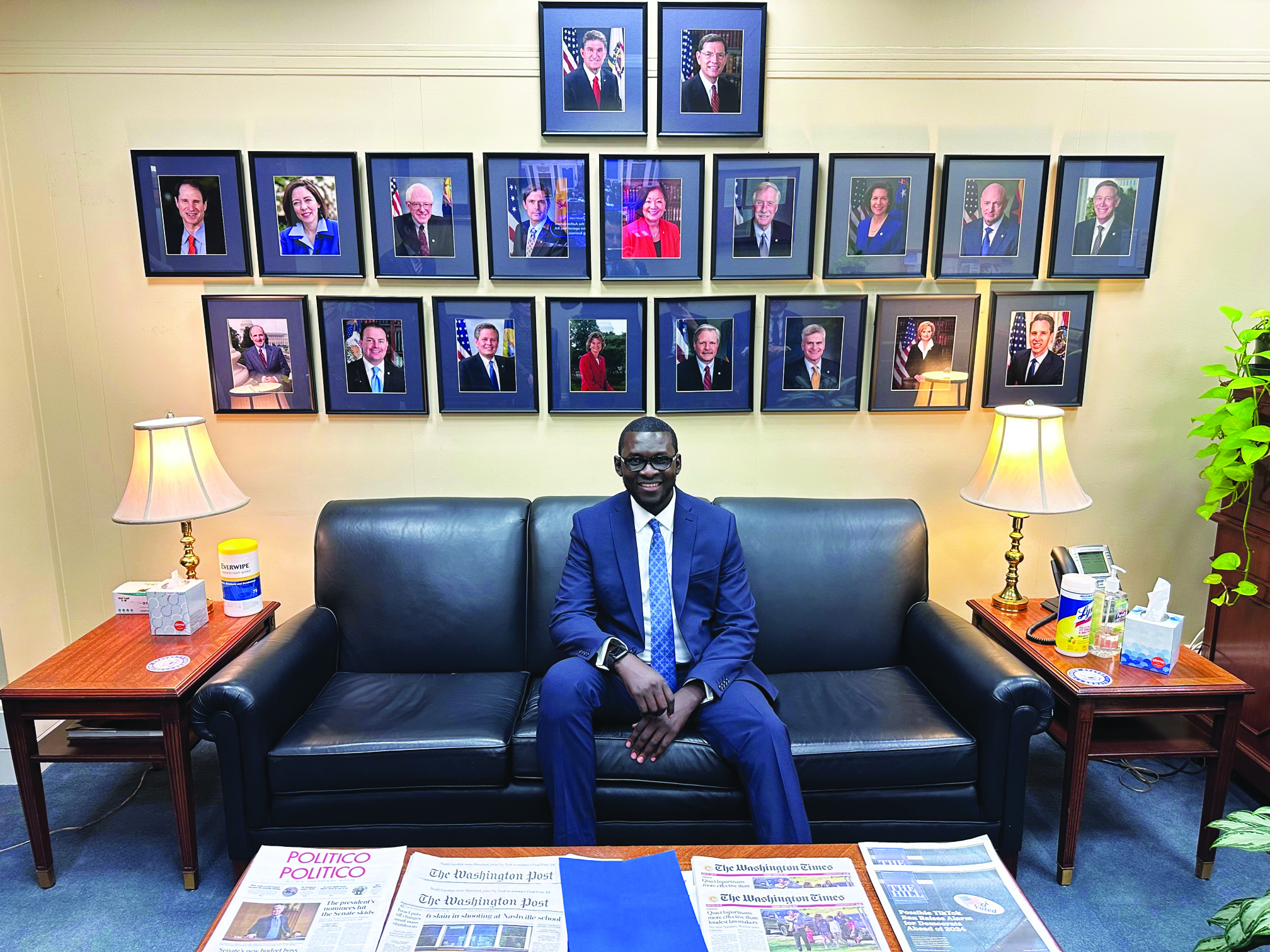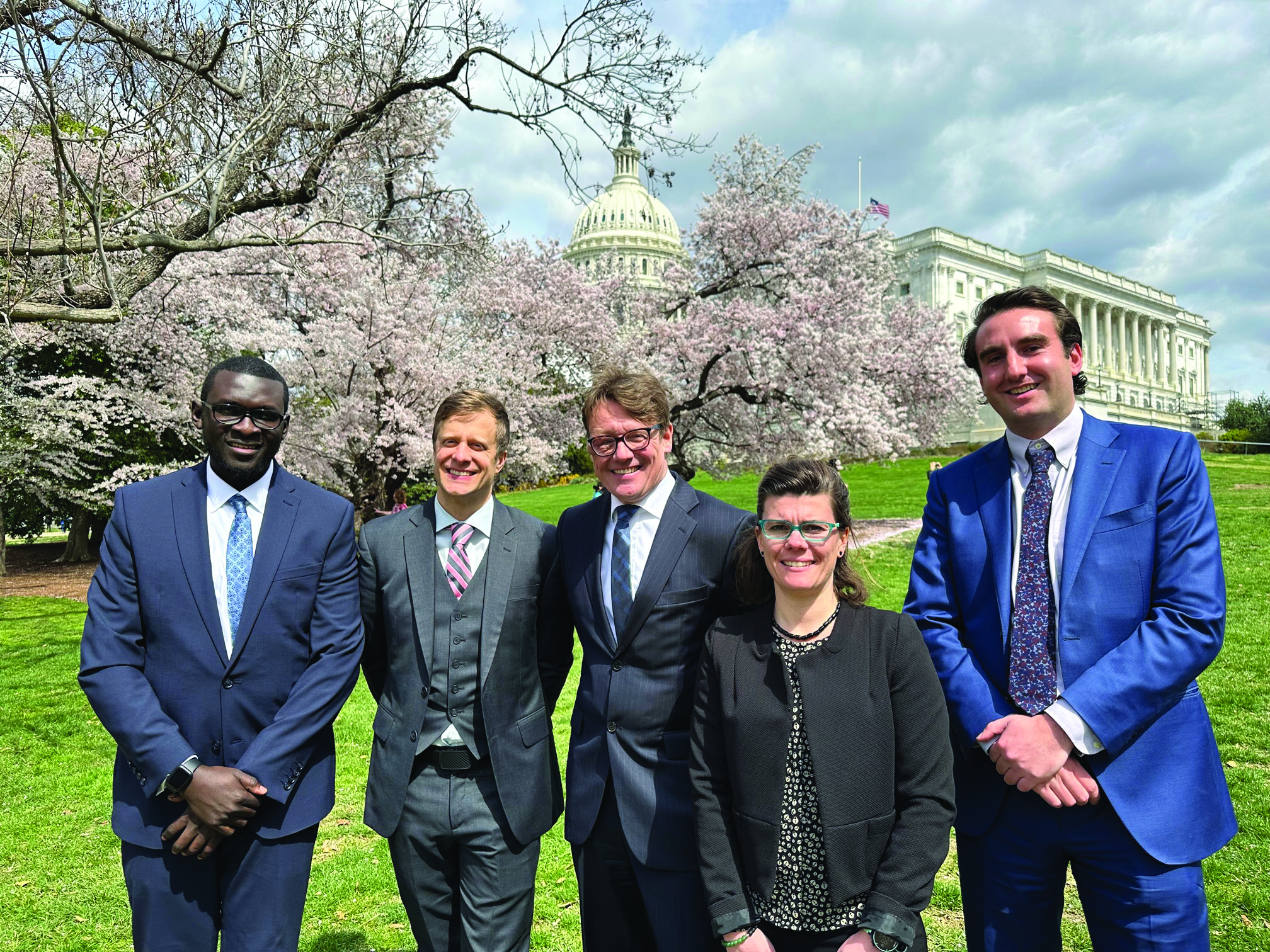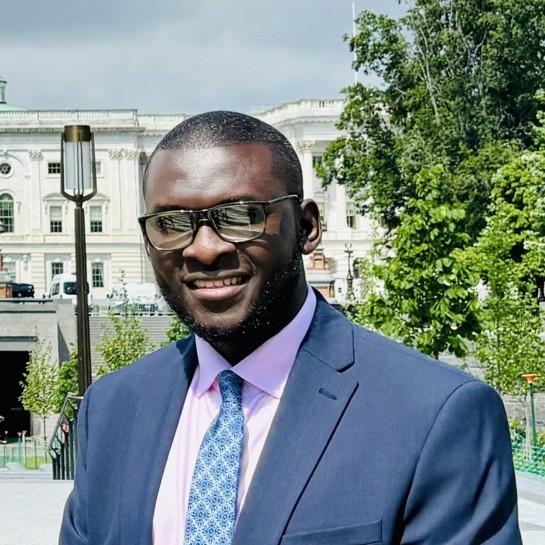Behind the Lab Coat: A Scientist’s Journey to Influence Science Policy in Washington, D.C.
I have always been fascinated by arithmetic and computers. As a child, I enjoyed taking things apart to visualize and understand their underlying mechanisms. I can still vividly recall the experience of building my first computer; observing what seemed like a silicon city, I was astounded by the elegant arrangement of chips, integrated circuits, and other components on the motherboard. Ever since college, I have wanted to not only contribute to science but also benefit humanity. This aspiration inspired me to pursue a master’s degree and then a Ph.D., and eventually secure a postdoctoral research fellowship at Lawrence Berkeley National Laboratory (LBNL).
In 2019, I was honored to earn second place at the renowned Berkeley Lab Research SLAM contest. This event challenges early-career scientists and postdocs to present their work to a non-specialist audience in a concise, appealing, and clear manner. I firmly believe in the importance of clarifying complex mathematics and computer science topics for nontechnical audiences, and my participation in this contest led to an invitation to represent LBNL at the International Year of the Periodic Table Elemental Slam on Capitol Hill. Only six postdoctoral researchers from the U.S. Department of Energy (DOE) National Laboratories were chosen for this competition, during which I delivered a presentation about my work to U.S. legislators in Washington, D.C. The experience was a significant milestone in my career and offered a unique opportunity to engage with members of Congress and inquire about policy processes and scientific funding. As a result, I began to seek out further occasions to interact with federal officials and deepen my understanding of science policy decisions. When I came across the call for applications for the SIAM Science Policy Fellowship Program, I was immediately drawn to the possibility of leveraging my passion for science communication to positively impact the SIAM community in the U.S. and beyond.

I applied for the SIAM Science Policy Fellowship Program to learn more about critical legislative issues that pertain to science, technology, mathematics, and engineering (STEM); gain insight into the U.S. federal budget and appropriations processes; explore my passion for science policy; and advocate for applied mathematics and computational science. My application to the Fellowship Program included a personal statement and detailed description of a policy issue that I’m passionate about; I chose the National Quantum Initiative. I was awarded the Fellowship in January 2023, alongside four other early-career researchers.
As a Science Policy Fellowship recipient, I am required to attend the biannual spring and fall meetings of the SIAM Committee on Science Policy (CSP), which works tirelessly to amplify the recognition of applied mathematics research among legislative decision-makers. By effectively communicating the value and significance of SIAM to Congress, the CSP ensures that the SIAM community’s voice is heard in the heart of Washington, D.C. The committee actively liaises with vital stakeholders and advocates for science policy topics that are crucial to the SIAM community. Its members draft impactful white papers and position statements on diverse subjects, from the National Quantum Initiative and the CHIPS and Science Act to efficient power grid strategies and urgent matters like climate change. The CSP also engages in direct dialogues with policymakers to address a variety of key concerns, such as funding for prominent institutions like the National Science Foundation (NSF), National Institutes of Health (NIH), Department of Defense (DOD), and the DOE Advanced Scientific Computing Research (ASCR) program. To strengthen SIAM’s influence in Washington, D.C., the CSP collaborates with Lewis-Burke Associates LLC — a government relations firm that bridges the advocacy and communication gap between SIAM, federal agencies, and Congressional offices on issues at the forefront of applied mathematics and computational science.
During the spring CSP meeting in Washington, D.C., I conversed with senior members of SIAM from academia, industry, and the DOE National Laboratories. This meeting featured a half-day orientation that introduced Fellowship recipients to the foundational elements of SIAM’s history with science policy and communicated essential information about the federal budget, legislative process, and science advocacy. With guidance from Lewis-Burke, we examined significant budget items that are related to mathematics research and reviewed effective strategies for engaging with policymakers and their teams. While in Washington, D.C., I also met with lawmakers, legislative staff, and officials from various federal agencies and participated in outstanding training webinars on pivotal budget and policy topics that were curated by Lewis-Burke. These collective experiences enriched my understanding of advocacy work and provided deeper insight into the policy processes that shape science funding decisions.
Throughout the course of the CSP meetings, leaders from scientific institutions with a focus on mathematical research—including NSF, NIH, and DOE—discuss their present and anticipated budgets and outline their scientific objectives for the coming year. In the spring of 2023, CSP representatives convened with Sean Jones, assistant director for the NSF Directorate for Mathematical and Physical Sciences (MPS), and David Manderscheid, division director for the MPS Division of Mathematical Sciences. Jones and Manderscheid emphasized the need for increased funding to support initiatives for artificial intelligence, climate science, and biotechnology. We also conversed with Asmeret Asefaw Berhe, director of the DOE Office of Science, who oversees nearly eight billion dollars in funding for scientific research across the U.S. at national labs, universities, and private companies. Berhe was joined by staff from the DOE’s ASCR program—a main funder of applied mathematics research—including Ben Brown, director of ASCR’s Facilities Division, and Steve Lee, a program manager. The DOE officials discussed the success of the Exascale Computing Project (ECP); current DOE priorities, such as diversifying and bolstering the computational science workforce; and plans for DOE offices (including ASCR) to transition research funds now that ECP has run its course. We likewise met with Alexandra Isern, assistant director of the NSF Directorate for Geosciences (GEO), who discussed how SIAM’s recent “Report of the SIAM Convening on Climate Science, Sustainability, and Clean Energy” is guiding GEO’s thinking in the climate research space.

At the 2023 spring gathering, I was privileged to interact with policymakers who endorsed the DOE Science for the Future Act and the National Quantum Initiative. The latter was central to my research endeavors at the time, so I was able to articulate the ramifications of the DOE’s fiscal decisions on quantum and computational science work. For example, an ongoing pivotal research initiative called the Quantum Application Network Testbed for Novel Entanglement Technology (QUANT-NET)—a collaboration between LBNL, the University of California, Berkeley (UC Berkeley), and the California Institute of Technology—is an avant-garde, software-controlled quantum computing network that links LBNL and UC Berkeley. This revolutionary endeavor combines unparalleled expertise in quantum technologies, optics, materials, networks, and testbed operations. The idea for QUANT-NET originated at the 2020 DOE Quantum Internet Blueprint Workshop, where distinguished representatives from DOE National Laboratories, universities, industry stakeholders, and other U.S. agencies outlined a vision for the country’s first nationwide quantum internet.
Beyond my involvement with the CSP, I also completed an independent policy project during which I was honored to speak at the White House Office of Science and Technology Policy Open Science Listening Session in May 2023. I focused my remarks on pressing priorities within the SIAM community and underscored the invaluable role that SIAM has played in shaping my career path and fostering my professional growth. While access to freely available information and publications is undoubtedly vital, open science policies must also recognize the significance of nurturing communities that support the development of early-career researchers. To advocate for this type of support, I highlighted the importance of conferences and other events that facilitate the exchange of ideas and offer networking opportunities for attendees. These gatherings encourage researchers to forge meaningful connections, collaborate on groundbreaking projects, and ultimately drive scientific progress.
My speech also emphasized the need for targeted publishing initiatives that reach relevant audiences to ensure that our work has a substantial impact. By disseminating our findings to the right readers, we maximize the potential for real-world applications and advancements. Finally, I expressed my gratitude for the instrumental role of the SIAM Science Policy Fellowship in my professional advancement. This and other similar opportunities provide mentorship, guidance, and unparalleled connections with experts in the field.
Firsthand insight into program initiatives is essential to understanding how public needs directly influence research trajectories. The ripple effects of these decisions on the SIAM community—from undergraduate fellowships to multiyear enterprises—accentuate the CSP’s pivotal role. My involvement in the SIAM Science Policy Fellowship Program has deepened my recognition of the CSP’s integral contributions to science policy decision-making and heightened my interest in the policy processes that shape funding decisions. With ongoing budget and policy deliberations, the SIAM community must maintain its presence and voice in Washington, D.C.; in fact, the trajectory of the scientific community depends upon these determinations. It’s been wonderful to take part in the CSP meetings as a SIAM Science Policy Fellow, and I look forward to the upcoming CSP fall meeting on November 15th.
About the Author
Bashir Mohammed
Senior Staff AI Architect, Intel
Bashir Mohammed is a Senior Staff AI Architect in Intel’s Network and Edge Group, where he drives pioneering innovations in artificial intelligence (AI) for the Edge Platform. His work focuses on the development and deployment of large language models, large vision models, and AI reasoning and action agentic frameworks. These efforts deliver transformative solutions across diverse industries to enhance the efficiency, scalability, and intelligence of edge applications.

Stay Up-to-Date with Email Alerts
Sign up for our monthly newsletter and emails about other topics of your choosing.



